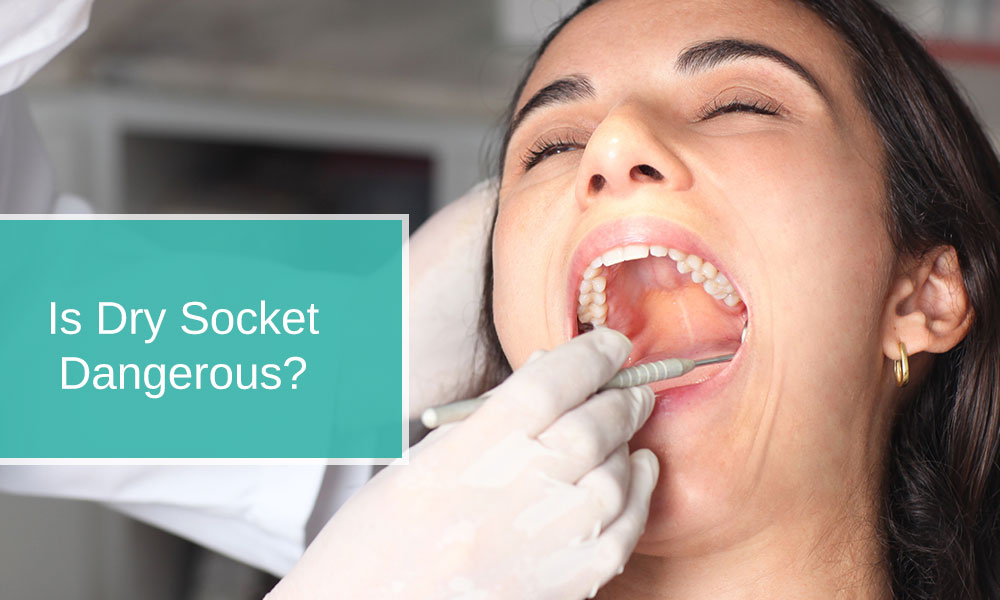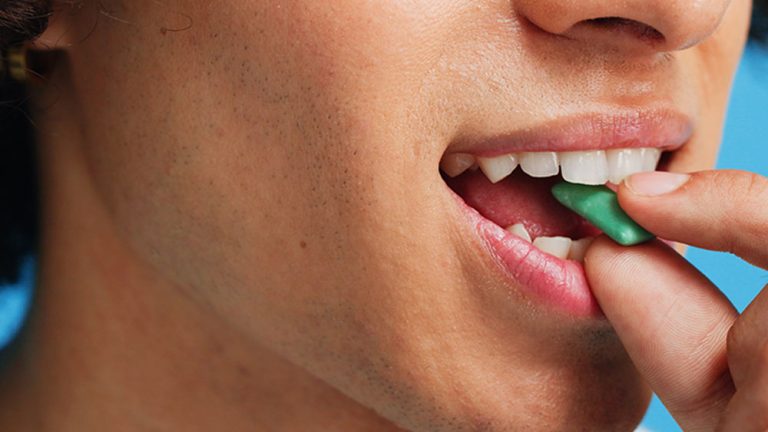
Is Dry Socket Dangerous?
Tooth extraction is a routine dental procedure, but complications like dry socket can arise, prompting questions about their severity. In this guide, we’ll explore the intricacies of dry socket, its potential dangers, and how to navigate the recovery process.
Understanding Dry Socket
2.1 What is Dry Socket?
Dry socket, scientifically known as alveolar osteitis, occurs when the blood clot that normally forms after tooth extraction is dislodged or dissolves prematurely. This exposes the underlying bone and nerve, leading to heightened pain and potential complications.
2.2 Causes of Dry Socket
The primary cause of dry socket is the premature loss or disruption of the blood clot in the extraction site. Several factors contribute to this, including:
- Inadequate Blood Clot Formation: Insufficient formation of the initial blood clot.
- Smoking: Tobacco use, particularly smoking, is a significant risk factor.
- Oral Contraceptives: Hormonal factors, such as the use of oral contraceptives.
- Trauma during Extraction: Excessive force or trauma during the extraction process.
Understanding these causes is crucial for both prevention and timely intervention.
Identifying Symptoms
3.1 Pain and Discomfort
One of the hallmark symptoms of dry socket is intense pain, typically starting a few days after tooth extraction. This pain goes beyond the usual discomfort associated with the healing process. Patients often describe it as a throbbing, radiating pain that can extend to the ear or jaw on the affected side. The severity of the pain underscores the importance of recognizing and addressing dry socket promptly.
3.2 Unpleasant Odor and Taste
A distinctive sign of dry socket is the presence of an unpleasant odor and taste emanating from the extraction site. This occurs due to the exposed bone and tissue, providing a breeding ground for bacteria. Patients may notice a foul taste in their mouth, often accompanied by bad breath. Recognizing these olfactory cues is crucial for early detection.
3.3 Visual Signs
Visually, dry socket presents as an empty-looking socket. Unlike a healthy healing socket, which is covered by a protective blood clot, the absence of this clot exposes the underlying bone. Dentists may identify this visual cue during a post-extraction examination, but patients can also observe it themselves.
Is Dry Socket Common?
Dry socket is relatively uncommon, occurring in approximately 2-5% of all tooth extractions. While it may not be widespread, its potential impact on an individual’s well-being necessitates awareness and proactive measures. One frequently asked question from people is could dry socket kill? The short answer is no.
Risk Factors
5.1 Poor Oral Hygiene
Maintaining good oral hygiene is crucial to preventing dry socket. The risk increases when proper post-extraction care is neglected. Patients should adhere to the dentist’s instructions regarding cleaning, avoiding vigorous rinsing, and using prescribed mouthwashes.
5.2 Smoking
Smoking is a significant risk factor for dry socket. The chemicals in tobacco can impede blood clot formation and contribute to the dislodgment of existing clots. Dentists strongly advise against smoking during the post-extraction healing period.
5.3 Trauma or Injury
Excessive trauma during the extraction process can increase the likelihood of dry socket. Dentists employ precise techniques to minimize trauma, emphasizing the importance of choosing experienced professionals for extractions.
Complications and Dangers
6.1 Infection
One of the primary dangers associated with dry socket is the increased risk of infection. With the protective blood clot missing, bacteria can easily infiltrate the open socket, leading to localized infections. Infections can exacerbate pain, delay healing, and, if left untreated, spread to surrounding tissues. Recognizing the signs of infection, such as increased swelling, redness, or discharge, is crucial for seeking timely intervention.
6.2 Prolonged Healing
Dry socket can significantly prolong the healing process after tooth extraction. The absence of a stable blood clot hinders the formation of granulation tissue, necessary for tissue repair. Prolonged healing not only extends discomfort but may also lead to complications such as delayed restoration or difficulty in adapting to prosthetic devices.
6.3 Impact on Daily Life
The persistent pain and discomfort associated with dry socket can have a substantial impact on daily life. Simple activities such as eating, speaking, and even sleeping may become challenging. Additionally, the emotional toll of prolonged pain can affect an individual’s overall well-being. Addressing dry socket promptly is essential to mitigate these challenges.
Preventing Dry Socket
7.1 Proper Aftercare
Proper aftercare is crucial to prevent dry socket. Dentists provide specific post-extraction instructions, including:
- Avoiding vigorous rinsing: Gentle rinsing is recommended.
- Not using straws: Suction can dislodge clots.
- Following prescribed medications: Pain management and antibiotic medications, if prescribed.
7.2 Lifestyle Adjustments
Lifestyle adjustments, particularly for smokers, play a pivotal role in prevention. Dentists advise patients to refrain from smoking during the healing period. Adopting a diet rich in vitamins and minerals that support healing is also beneficial.
Treatment Options
8.1 Pain Management
Effective pain management is a key aspect of addressing dry socket. Dentists may recommend over-the-counter pain relievers such as ibuprofen or prescribe stronger medications if necessary. Topical analgesic dressings directly applied to the extraction site can provide localized relief. Ensuring proper dosage and adhering to the prescribed medication schedule is crucial for managing pain effectively.
8.2 Professional Intervention
When dry socket occurs, professional intervention is often necessary. Dentists may perform a gentle cleaning of the socket to remove debris and promote healing. Medicated dressings with soothing agents can be applied to alleviate pain and reduce discomfort. In severe cases, where infection is present, a course of antibiotics may be prescribed.
Home Remedies
9.1 Saltwater Rinse
A saltwater rinse is a simple and effective home remedy for managing dry socket symptoms. Mixing a teaspoon of salt in warm water and gently rinsing the mouth helps cleanse the area and reduce bacterial activity. This can be done multiple times a day, especially after meals.
9.2 Clove Oil
Clove oil possesses natural analgesic and antimicrobial properties, making it a popular remedy for dry socket. Applying a small amount of clove oil to the affected area with a cotton swab can provide temporary relief from pain and discomfort. It’s important to use clove oil sparingly and avoid direct contact with the tongue or gums.
9.3 Cold Compress
The application of a cold compress to the external cheek near the extraction site can help reduce swelling and numb the area, providing temporary relief. Cold compresses can be applied in short intervals, typically 15-20 minutes at a time, and should be wrapped in a thin cloth to prevent frostbite.
Recovery and Healing
10.1 Follow-Up Appointments
Follow-up appointments with the dentist are crucial for monitoring the healing progress and addressing any concerns. Dentists may perform additional treatments or adjustments based on the individual’s response to initial interventions.
10.2 Resuming Normal Activities
Gradually resuming normal activities is possible as the extraction site heals. However, individuals should continue to follow post-extraction guidelines, including avoiding strenuous physical activities and maintaining a soft diet until given the green light by their dentist.
When to Seek Immediate Help
It’s critical to be aware of situations that warrant immediate dental attention. If any of the following occur, seek help promptly:
- Intense or worsening pain: If the pain becomes unbearable or intensifies over time.
- Signs of infection: Increased swelling, persistent redness, or discharge from the extraction site.
- Unmanageable bleeding: If bleeding persists and is challenging to control.
- Persistent discomfort: If symptoms persist or worsen despite home remedies and prescribed medications.
Understanding when to seek immediate help ensures timely intervention to address emerging issues.
FAQs about Dry Socket
12.1 Can Dry Socket Heal on Its Own?
While some mild cases may improve with proper home care, most cases of dry socket require professional intervention. Dentists can clean the site, alleviate pain, and promote optimal healing. Ignoring symptoms and hoping for self-healing may lead to complications.
12.2 How Long Does Dry Socket Last?
The duration of dry socket varies. With proper treatment and adherence to post-extraction guidelines, most cases begin to improve within a week. Severe cases or those with complications may take longer. Regular follow-up appointments with the dentist are essential to monitor progress.
12.3 Holes in teeth – Dry Socket?
Holes in teeth are often a sign of cavities. However, if these holes aren’t cavities then that means potential cases such as consistent biting or natural dental landmarks could be reasons why.
Key Takeaways
In conclusion, understanding the potential dangers of dry socket and taking proactive measures for prevention and early intervention are essential for a smooth recovery after tooth extraction. While dry socket is not common, its impact on daily life and potential complications underscore the importance of proper care and timely professional guidance. By following the guidelines provided in this comprehensive guide, individuals can navigate the post-extraction period with confidence and minimize the risk of complications.



